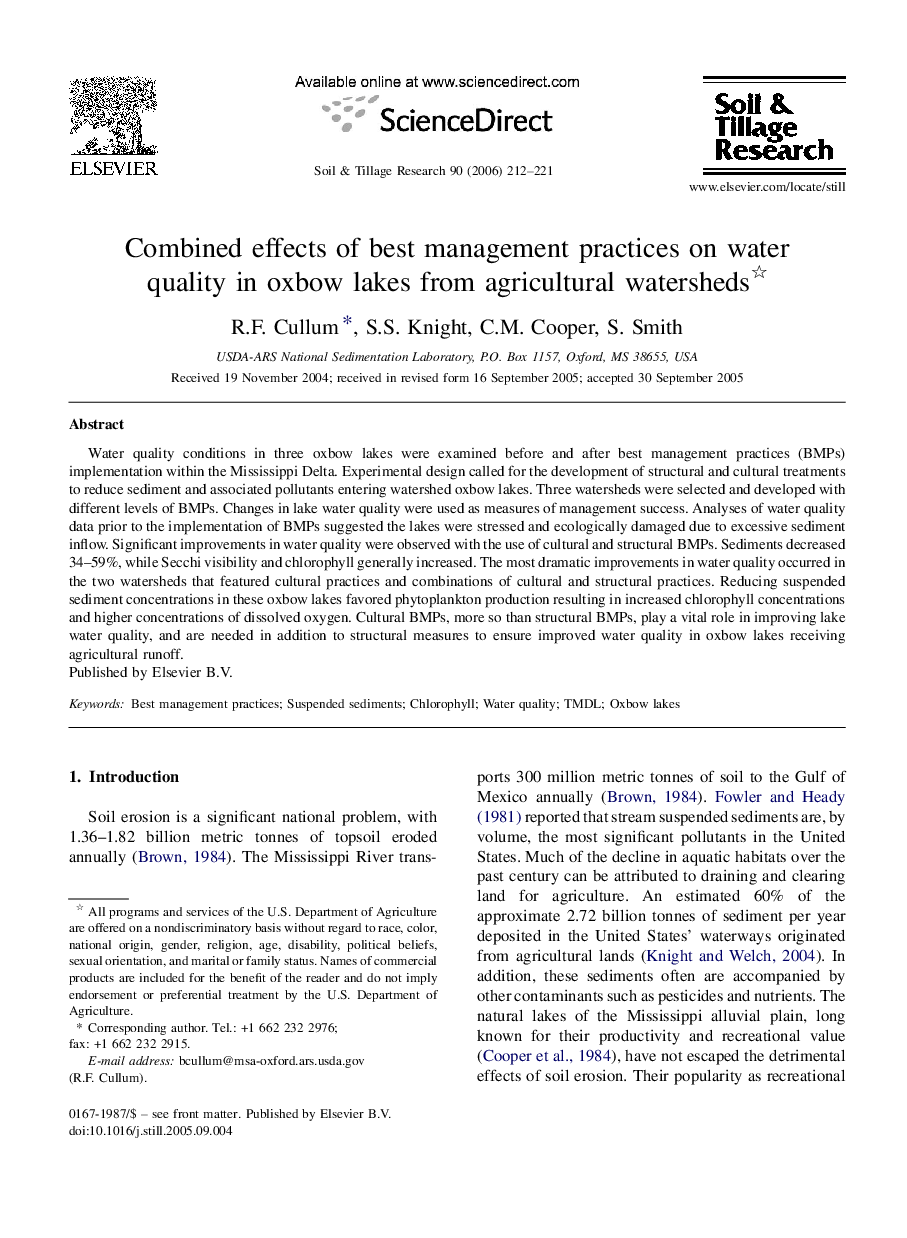| Article ID | Journal | Published Year | Pages | File Type |
|---|---|---|---|---|
| 306831 | Soil and Tillage Research | 2006 | 10 Pages |
Water quality conditions in three oxbow lakes were examined before and after best management practices (BMPs) implementation within the Mississippi Delta. Experimental design called for the development of structural and cultural treatments to reduce sediment and associated pollutants entering watershed oxbow lakes. Three watersheds were selected and developed with different levels of BMPs. Changes in lake water quality were used as measures of management success. Analyses of water quality data prior to the implementation of BMPs suggested the lakes were stressed and ecologically damaged due to excessive sediment inflow. Significant improvements in water quality were observed with the use of cultural and structural BMPs. Sediments decreased 34–59%, while Secchi visibility and chlorophyll generally increased. The most dramatic improvements in water quality occurred in the two watersheds that featured cultural practices and combinations of cultural and structural practices. Reducing suspended sediment concentrations in these oxbow lakes favored phytoplankton production resulting in increased chlorophyll concentrations and higher concentrations of dissolved oxygen. Cultural BMPs, more so than structural BMPs, play a vital role in improving lake water quality, and are needed in addition to structural measures to ensure improved water quality in oxbow lakes receiving agricultural runoff.
